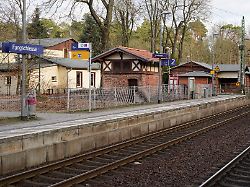Investment only in the inventory
The federal government is almost putting rail expansion on hold
February 2, 2024, 2:14 p.m
Listen to article
This audio version was artificially generated. More info | Send feedback
The mobility transition is one of the traffic light coalition’s major concerns. But for this to happen, a lot of money has to flow into infrastructure. The KTF debacle makes savings necessary. Current figures show that they are even larger than expected. There is hardly any thought of expansion. And that has consequences.
According to “Spiegel” information, the budget decisions of the traffic light coalition after the Karlsruhe ruling on the climate and transformation fund have an even greater impact on the financing of the railway than previously assumed. An internal list from Deutsche Bahn’s InfraGO infrastructure division, which is available to “Spiegel”, shows how drastic the cuts will be. Due to the uncertainties resulting from the ruling, “a short-term prioritization of the infrastructure measures was necessary,” writes the chairman of the InfraGO board in the paper to the members of the supervisory board. Of the 45 billion euros promised to the railways by the federal government, 27 billion euros are still left. According to the railway, this money should now mainly flow into the inventory. There is not enough money to expand capacity in the already overloaded network.
The cuts affect, for example, the planning of a digital S-Bahn in Hamburg. The capacity of the overloaded S-Bahn should have been expanded via a digital signal box. The relocation of the Fangschleuse train station in Brandenburg for 172.4 million euros, with which Brandenburg’s Prime Minister Dietmar Woidke had hoped for a better connection between the Tesla factory and Berlin, has also been stopped for the time being. The 773 million euro expansion of the eastern freight corridor from Uelzen to Halle is also likely to take decades, with immense consequences for freight traffic, which the traffic light wants to shift to the rails. In the north, the tunnel under the Fehmarnbelt will go into operation without a meaningful connection to Lübeck and Hamburg, and there is no money for them either.
It is not always the railway itself that prefers to invest the money in existing buildings rather than in expansion. For some projects it is also the Ministry of Finance that has reservations. The so-called digital node in the controversial Stuttgart 21 underground station was actually intended to improve the disruption-prone operation of the Stuttgart S-Bahn. Trains should be prepared for semi-autonomous operation and the frequency on the main route should be increased in order to reduce car traffic in the valley basin. The digital showcase project by Railway and Transport Minister Volker Wissing will apparently not be implemented initially due to concerns from the Ministry of Finance.
